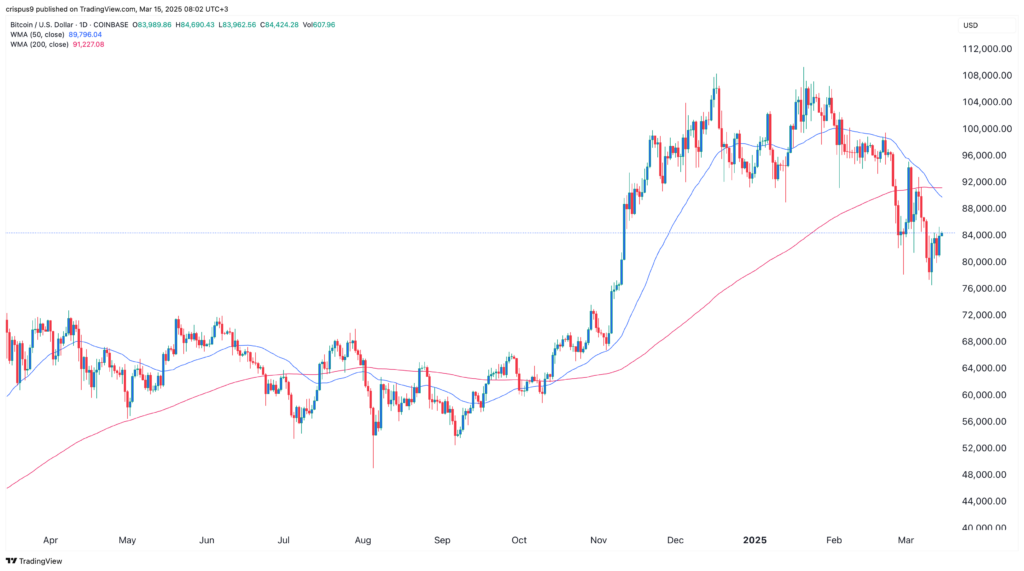
Bitcoin’s price has experienced a minor recovery from its monthly lows, yet it continues to struggle to overcome the crucial resistance level of $85,000.
As of Saturday, Bitcoin (BTC) rose to $84,525, reflecting a 10% increase from this month’s lowest point. However, it remains entrenched in a local bear market, having declined over 22% from its highest point this year.
At the time of writing, Bitcoin was trading slightly above $84,335.
On Friday, Bitcoin and several altcoins saw a small uptick, mirroring the positive performance of other asset classes such as stocks and gold. The Dow Jones industrial average jumped by over 650 points, while the S&P 500 and Nasdaq 100 added 117 and 450 points, respectively. Additionally, gold surged to a record high of $3,010.
Bitcoin price faces potential obstacles
The recovery of Bitcoin is accompanied by two significant challenges and two potential opportunities. Firstly, there are signs that investors continue to feel apprehensive. Although the Fear and Greed Index has moved out of the extreme fear zone of 18, it remains in the fear category at 22.
Historically, Bitcoin and other cryptocurrencies tend to perform well when the index is within the greed zone. This caution is further highlighted by the $143 million in assets withdrawn from spot Bitcoin ETFs, contributing to a total of $870 million in outflows over the past week. Notably, withdrawals have occurred for five consecutive weeks.
Secondly, from a technical standpoint, Bitcoin has encountered a death cross, where the 50-day and 200-day Weighted Moving Averages have intersected. Typically, such a crossover suggests the potential for further declines over time. In Bitcoin’s specific case, there remains the possibility of revisiting $73,900, the peak seen in March 2024.

BTC price chart | Source: crypto.news
Potential opportunities for Bitcoin price
Regarding Bitcoin’s first opportunity, investors should closely monitor the Federal Reserve’s announcements following its second meeting of the year on March 18-19. Concerns about a potential recession could lead the central bank to adopt a more dovish approach and signal potential interest rate cuts.
A shift in the Federal Reserve’s policy would be beneficial for Bitcoin and other altcoins.
Another opportunity stems from the likelihood that investors may adopt a risk-on approach and capitalize on the dip in both the stock and cryptocurrency markets, especially since the most significant risks related to tariffs have already been factored into the market losses totaling trillions in value.
This trend has been observed in the past, particularly during the COVID-19 pandemic. In March 2020, investors reacted with panic, selling off stocks and cryptocurrencies, only to re-enter the market once the Fed indicated a markedly dovish stance.






